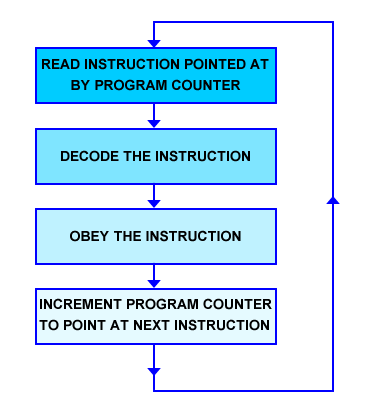Microprocessor and Memory Basics
The Program Counter
A Fetch-Decode-Execute Cycle Map

The Program Counter (or PC) is a register inside the microprocessor that stores the memory address of the next instruction to be executed. In ARM processors, the Program Counter is a 32-bit register which is also known as R15.
The processor first fetches the instruction from the address stored in the PC. The fetched instruction is then decoded so that it can be interpreted by the microprocessor. Once decoded, the instruction can then be executed and the PC incremented so that it contains the address of the next instruction. This is known as the fetch-decode-execute cycle.
In ARM processors, all instructions take up one word (4 bytes). Hence incrementing the PC actually adds 4 to its value as memory addresses are given in bytes but aligned on word boundaries.
